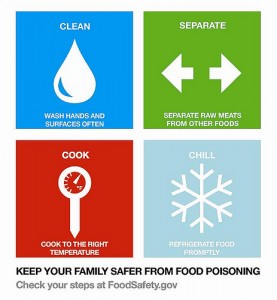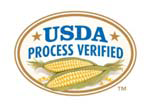Resources for advocacy: school food and ag policy
My San Francisco Chronicle column on food advocacy includes a severely edited list of organizations working on food issues, particularly school food and the farm bill. I thought the entire list might be useful.
Note that information about how to contact government officials appears at the end.
I consider this list preliminary. Please use the Comments to add to it. And pass it along, use, and enjoy!
| Organization | Advocacy resources |
| General | |
| Edible Communities | ~60 Edible magazines throughout U.S. Useful for identifying local food resources |
| Center for Science in the Public Interest (CSPI) | Advocacy and lobbying for a broad range of food and nutrition issues, school food among them. |
| Slow Food USA | Promotes policies favoring slow, as opposed to fast, food |
| Strategic Alliance for Healthy Food and Activity Environments | Promotes policies to improve corporate and government practices that affect food and activity environments in California |
| Community Food Security Coalition | More than 300 organizations working to build sustainable, self-reliant, local and regional food systems, and promote a healthier farm bill. |
| School Food | |
| Background legislation
|
The Healthy, Hunger-free Kids Act of 2010
Proposed nutrition standards for school meals |
| USDA programs | Team Nutrition: supports child nutrition programs through training
Chefs Move to Schools: partners chefs with schools |
| Public Health Advocacy Institute | Promotes use of the legal system to improve school food |
| National Alliance for Nutrition and Activity (NANA) | Lobbies for federal policies and programs to improve school food and activity environments (a project of CSPI) |
| Public Health Law & Policy
|
Offers a policy package with goals and actions for school wellness policies, and a fact sheet on the schools section of its website |
| National Farm to School Network | Promotes connecting farm produce to schools |
| California ProjectLEAN (Leaders Encouraging Activity and Nutrition) | Helps develop school wellness policies and healthier food and activity environments (a joint project of the California Department of Public Health and the Public Health Institute) |
| CANFIT (Communities, Adolescents, Nutrition, Fitness) | Community-based initiatives to improve diet and fitness among low-income, minority adolescents |
| Center For Ecoliteracy | Rethinking School Lunch Guide shows how to incorporate ecological understanding into school meals |
| School Food Focus | Focus: Food Options for Children in Urban Areas |
| One Tray | More direct connection between local farms and school meal programs |
| Better School Food | Community-based connection of school food to health |
| Cook For America | Culinary training to support healthy school lunches cooked from scratch |
| The Lunch Box | Online toolkit with information about healthy lunch options |
| Let’s Move Salad Bars to School | Supports salad bars in schools |
| Project Lunch | Improves Marin County school lunch program |
| Nourish Life | Food and sustainability in schools and communities |
| PEACHSF | How-to guides and resources |
| Farm Bill | |
| Institute for Agriculture and Trade Policy | Public policies for food and farming
|
| Food and Water Watch | Bring agricultural policy in line with health and environmental policy |
| National Sustainable Agriculture Coalition | Promotes healthier and more sustainable systems for small- and medium-size farms, farming opportunities, fair competition |
| Organic Trade Association (OTA) | Supports organic food production, large and small |
| Food Research and Action Center (FRAC) | Protect and expand food assistance programs
|
| Environmental Working Group | Exposes inequities in food subsidies; provides data on who gets what |
| PolicyLink | Working to get Healthy Food Financing Initiative into the Farm Bill |
How to contact federal and state government officials
The White House: http://www.whitehouse.gov/contact
Members of Congress http://www.congress.org/congressorg/directory/congdir.tt
- Communicate with members: http://www.congress.org/communicate
- Meet with members: http://www.congress.org/visiting
- Meet with staff: http://www.congress.org/congressional_staff
State officials: http://www.congress.org/legislative_protocol
Local media: http://www.congress.org/congressorg/dbq/media/






